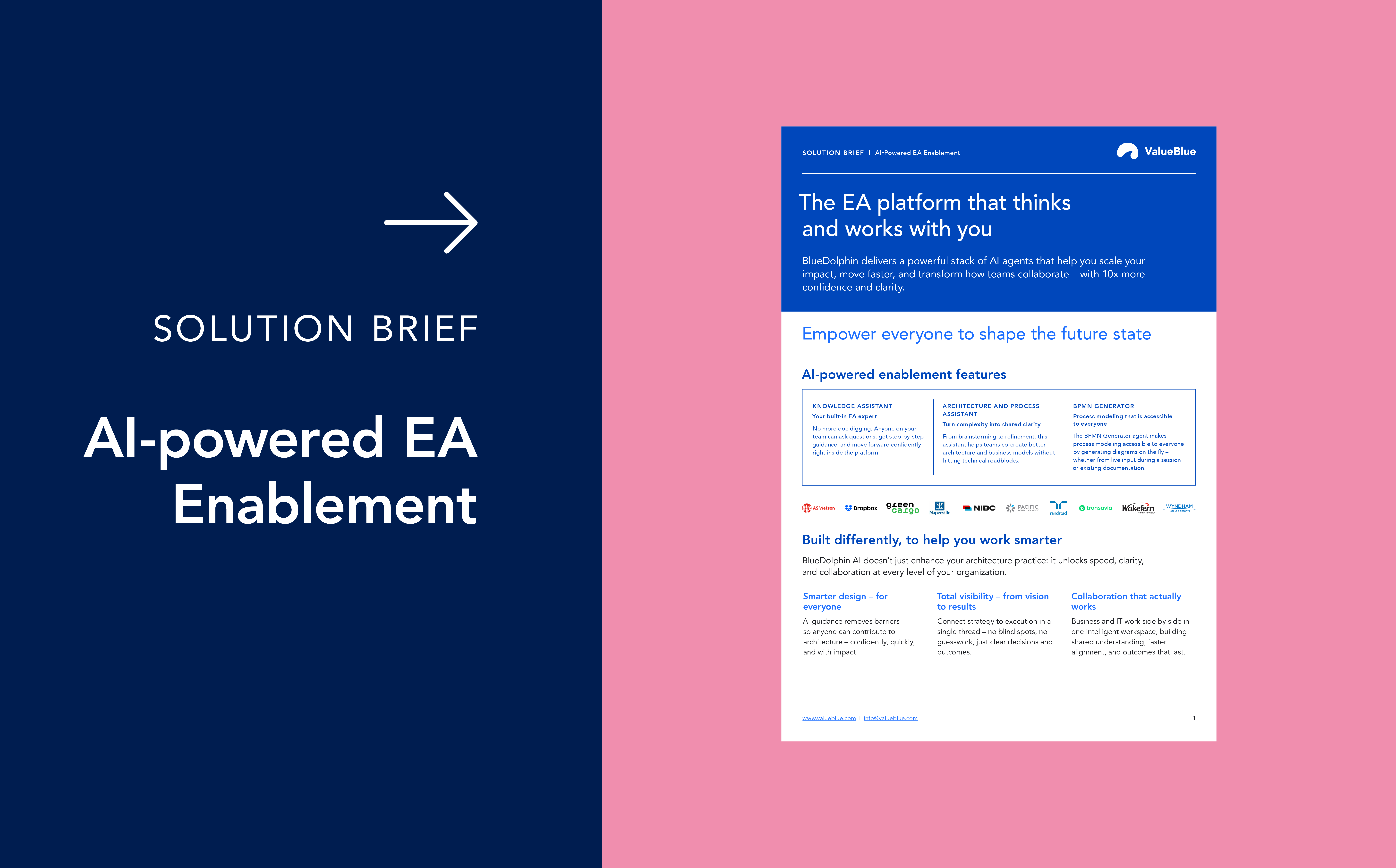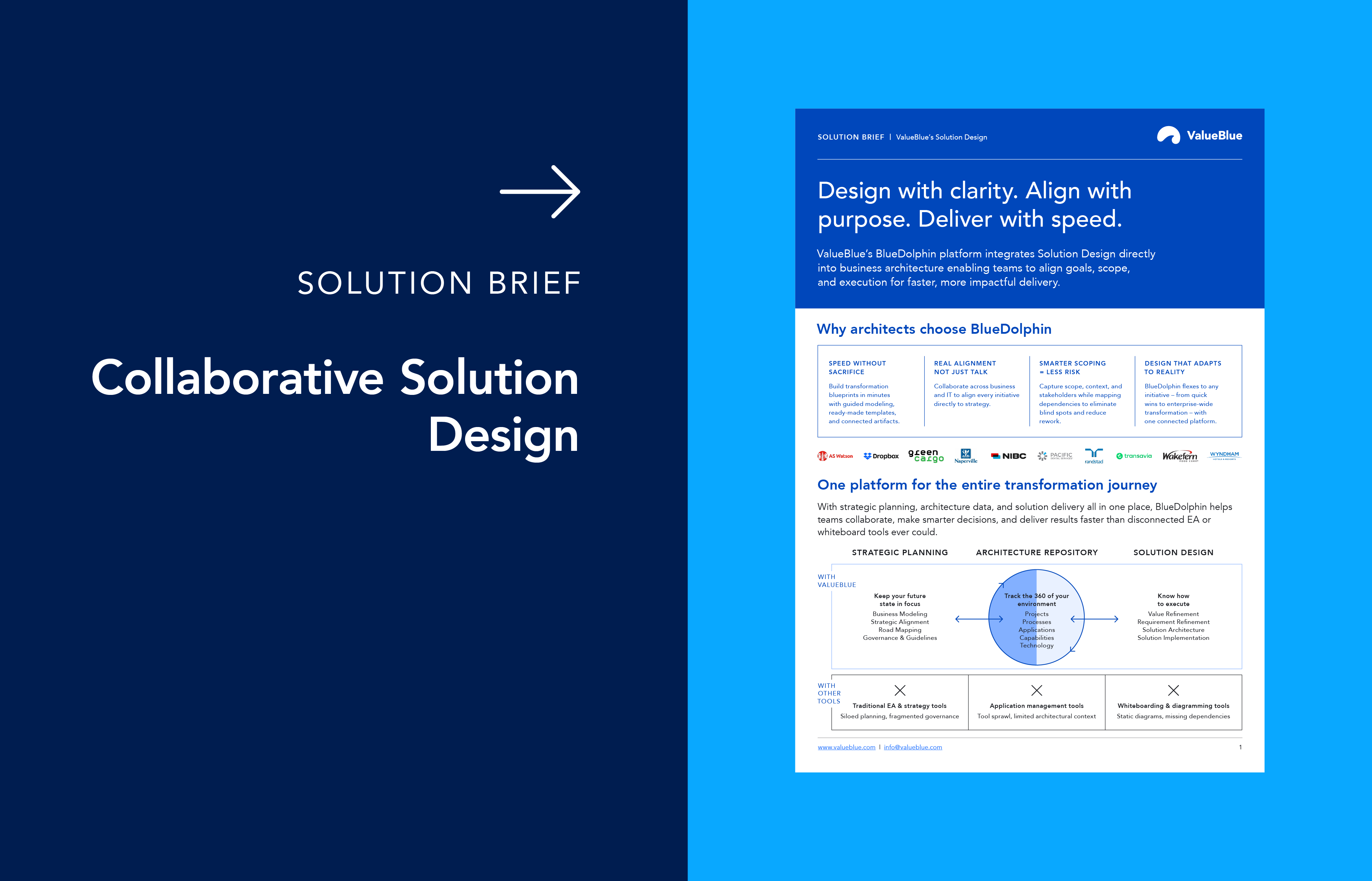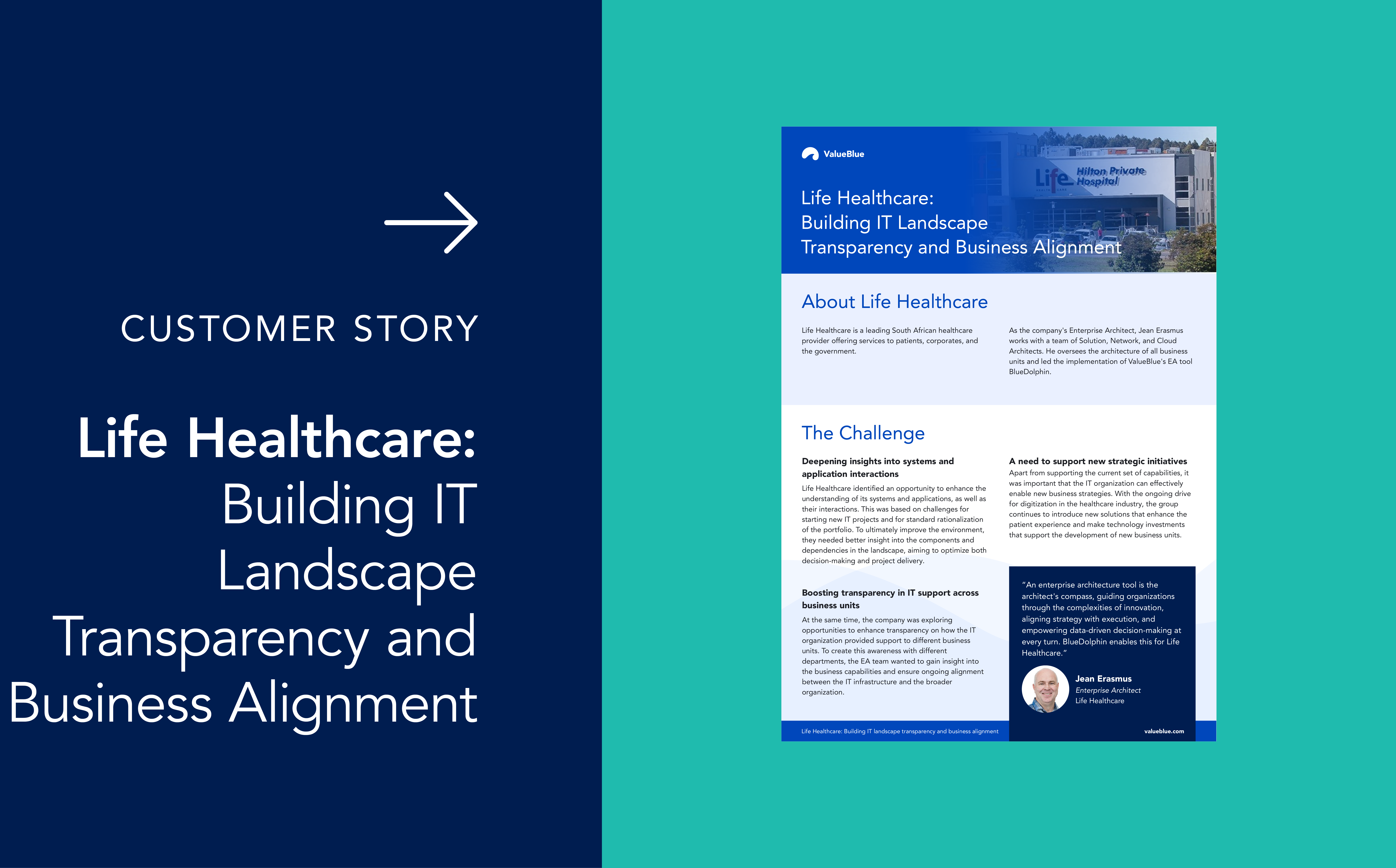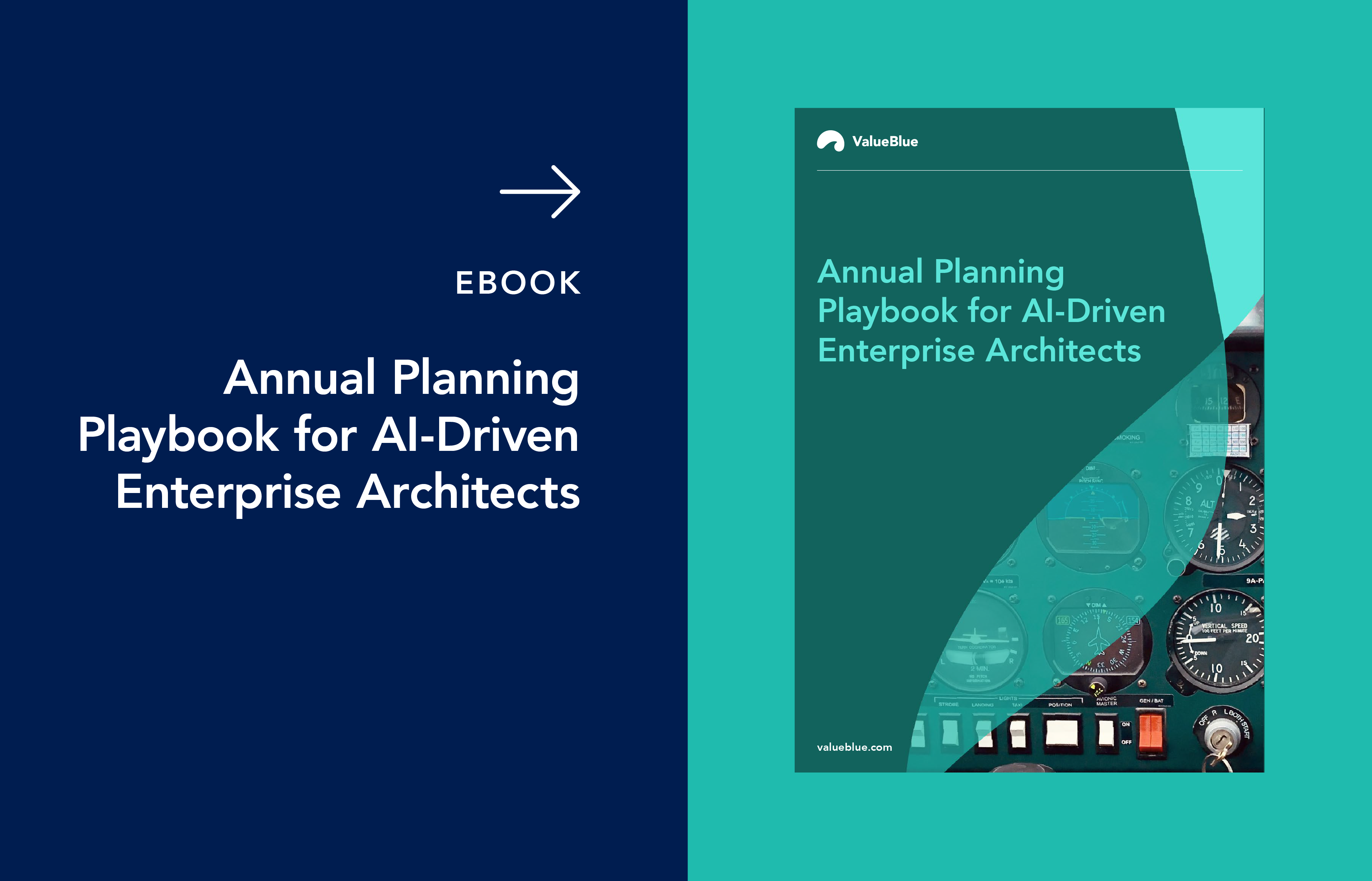Digital Transformation in Local Governments: Case Studies
Digital transformation is reshaping local governments, enabling them to better serve citizens, manage resources, and future-proof operations. Enterprise Architecture (EA) provides the structure and visibility necessary to align their business processes, IT assets, and strategic objectives.
In this article, we analyze real-life digital transformation journeys at two Dutch municipalities – Ede and Veenendaal – demonstrating how EA-driven approaches can deliver measurable improvements in efficiency, governance, and service delivery.
What is digital transformation?
Digital transformation is the process of leveraging technology to improve how services are delivered, making them more efficient, accessible, and responsive to customers’ needs. This shift involves replacing outdated, manual, or paper-based processes with digital tools such as online portals, automated workflows, and data-driven decision-making systems. By embracing digital transformation, local governments can streamline operations, enhance citizen engagement, and enable more agile responses to changing community expectations, ultimately fostering a more transparent, efficient, and citizen-centric public sector.
The role of Enterprise Architecture in local governments
Local governments manage a complex web of services, ranging from citizen engagement and public safety to infrastructure, social support, and regulatory compliance. This complexity is created by legacy systems, evolving policy requirements, and the growing expectation for digital-first services. Enterprise Architecture offers a way to:
- Map and understand the organization’s processes, data flows, and IT landscape.
- Align technology investments with strategic priorities.
- Manage change and risk effectively.
- Enable collaboration across departments and with external partners.
By providing a holistic view of the organization, EA empowers local governments to make informed decisions, avoid redundant investments, and ensure that digital initiatives deliver real value to both the administration and the public.
Digital transformation in the Municipality of Ede
The Municipality of Ede, with over 100,000 residents and 33 departments, provides various services, each supported by its own set of applications and processes. In 2017, Ede began a comprehensive effort to gain better insight into its Enterprise Architecture and data landscape, aiming to increase efficiency, predictability, and sustainability in its operations.
Challenges
Before the digital transformation, the project management in the municipality was reactive and fragmented. New software packages were often introduced without a holistic view of their impact, leading to unexpected costs, inefficient implementations, and frequent requests for additional funding. The municipality was only about 60% in control of its project portfolio, with many projects running over budget or encountering unforeseen obstacles.
The Enterprise Architecture-driven transformation
Municipality of Ede adopted a structured Enterprise Architecture approach to bring order and predictability to its digital initiatives:
- Comprehensive mapping: The municipality mapped all processes, applications, and IT infrastructure, using a 12-level model that included datafication – a recognition of the growing importance of data in modern governance.
- Project start architecture: Every new project required a detailed architectural assessment, ensuring that dependencies, risks, and resource needs were understood before approval.
- Total Cost of Ownership: Projects were evaluated as business cases, weighing costs against anticipated benefits. This enabled leadership to make informed decisions about which projects to pursue, and which to decline.
- Governance and change management: The EA approach fostered greater accountability, with clear rules for project approval and ongoing oversight.
Results
- Budget control: The municipality moved from 60% to over 95% control of its project portfolio. Now, 99% of projects are delivered on budget.
- Efficiency and sustainability: By understanding dependencies and planning proactively, Ede avoided costly surprises and unreasonable workload. The organization became more efficient, effective, and future-proof.
- Employee engagement: The user-friendly architecture platform fostered enthusiasm among staff, ensuring that EA became embedded in the organizational culture.
- Service quality: With 375 applications supporting diverse services, Ede gained the ability to quickly assess the impact of changes, improve service continuity, and respond more effectively to citizen needs.
- Data-driven decisions: The municipality leveraged data not only for internal optimization (e.g., energy savings from smart lamppost management) but also for enhancing public safety and urban development.
Key insights
Municipality of Ede’s experience highlights the importance of visibility, governance, and data-driven decision-making in digital transformation. By embedding EA into every layer of the organization, they built a resilient foundation for ongoing innovation and improvement.
Digital transformation in the Municipality of Veenendaal
Veenendaal, a rapidly growing municipality in the Netherlands, serves 68,000 residents directly and is responsible for the joint infrastructure of four neighboring municipalities, supporting a total of 123,000 people. The organization employs around 650 staff across 23 teams, with a significant reliance on digital tools and services.
Challenges
The increase in specialized applications, many delivered as SaaS, created a complex landscape of software contracts and procurement processes. The municipality struggled to maintain visibility over contract end dates, renewal requirements, and compliance with public procurement regulations. This lack of control risked costly lapses, inefficient renewals, and administrative overload.
The Enterprise Architecture-driven transformation
Municipality of Veenendaal leveraged its Enterprise Architecture platform to regain control over its application and contract landscape:
- Comprehensive inventory: The ICT Architect mapped all software and SaaS contracts, including end dates, procurement requirements, and user satisfaction levels.
- Standardized data collection: Using questionnaires integrated into the EA platform, information from application administrators across the organization was gathered efficiently. This standardized approach enabled rapid data collection and analysis without overburdening staff.
- Procurement planning: With a clear view of upcoming contract renewals, the municipality could prioritize tenders, run parallel procurement processes, and ensure legal compliance at both national and European levels.
- Collaboration and knowledge sharing: Veenendaal engaged with other municipalities, such as The Hague, to share best practices and strengthen its procurement strategy.
Results
- Rapid data gathering: Within two weeks, the municipality had completed its inventory for most applications, enabling proactive planning and prioritization.
- Process control: Veenendaal established a transparent, legally compliant procurement process, reducing the risk of missed renewals and costly contract lapses.
- Organizational efficiency: The architecture platform became an organization-wide resource, supporting ongoing updates and functional application management.
- Scalability: The approach allowed the Municipality of Veenendaal to handle a large volume of tenders (over 10 European and 40 multiple private tenders) without overwhelming its teams.
Key insights
This experience highlights the value of structured data management, cross-departmental collaboration, and standardized processes in managing digital complexity. By embedding Enterprise Architecture into its procurement and contract management workflows, the municipality achieved greater control, compliance, and operational efficiency.
Best practices for digital transformation in local governments
The examples of Ede and Veenendaal municipalities showcase several key principles for successful digital transformation in local governments:
- Holistic visibility: Comprehensive mapping of processes, applications, and data flows is essential for informed decision-making and risk management.
- Governance and accountability: Clear rules and oversight mechanisms ensure digital initiatives deliver value and stay on track.
- Stakeholder engagement: User-friendly tools and inclusive processes foster buy-in and sustain momentum.
- Data-driven optimization: Leveraging data for both internal operations and public services unlocks efficiencies and enhances service quality.
- Continuous improvement: Regular updates, cross-municipality collaboration, and iterative planning support ongoing innovation and adaptability.
Building future-ready governments through Enterprise Architecture
Digital transformation in local governments is not only a matter of adopting new technologies but also of fundamentally rethinking how services are delivered, resources are managed, and value is created for citizens. The cases of Ede and Veenendaal show us that with a strong Enterprise Architecture foundation, municipalities can achieve remarkable improvements in efficiency, control, and service quality. These real-life examples offer a roadmap for other local governments seeking to navigate the complexities of digital transformation and build resilient, future-ready organizations.
To learn more about how Enterprise Architecture drives digital transformation across different industries, visit our Success Stories page.





